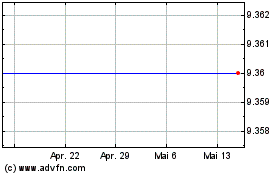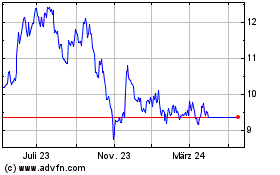Huawei procures 5G telecom gear from Japan as Beijing pushes for
global edge
By River Davis
This article is being republished as part of our daily
reproduction of WSJ.com articles that also appeared in the U.S.
print edition of The Wall Street Journal (June 30, 2020).
TOKYO -- The U.S. is making it tougher for American companies to
help China roll out superfast cellular networks. But companies in
Japan, a U.S. ally, are fueling China's leap ahead and making money
doing it.
By the end of the year, China plans to deploy more than a
half-million base stations in its $150 billion push to blanket the
nation with fifth-generation cellular service, often with equipment
from national champion Huawei Technologies Co.
"The Chinese government is enthusiastically promoting the spread
of 5G. It's a very promising market for our parts," said Tsuneo
Murata, chairman of electronic-component maker Murata Manufacturing
Co.
Supplying parts and materials to global technology companies is
bread-and-butter business for Japan since most of its
consumer-electronics brands have faded.
With the U.S. and China battling over tech hegemony and the U.S.
government weighing intervention in the private sector to block
Huawei, Japan is trying to supply both sides, while avoiding
political land mines. The question is how long Japan, whose
territory is protected by U.S. forces, and other U.S. allies such
as Germany and South Korea can keep up the business.
"When the U.S. first went forward with export controls, its
regulations mostly affected U.S. companies. But over the past year,
the U.S. has started to recognize that companies like Huawei are
still getting all of this technology," said Wendy Cutler, a former
top U.S. trade negotiator now at the Asia Society.
The "drumbeat of export controls" could soon reach U.S. allies,
she said. "If you look at the announcements holistically, it's
clear where we're going."
In May, the Trump administration said it would impose export
restrictions designed to cut off Huawei from overseas suppliers,
largely targeting Taiwan Semiconductor Manufacturing Co.'s sale of
semiconductors to Huawei's HiSilicon unit.
For now, China remains one of the few healthy sources of profit
for Japanese companies suffering from the impact of the
coronavirus. Anritsu Corp., whose machines measure whether 5G
equipment such as base stations are functioning properly, saw its
operating profit rise 75% in the latest quarter compared with a
year earlier, thanks to strong 5G-related demand in China and the
greater Asia region.
"For us, demand from China has been increasing as China's
smartphone suppliers sell products to a larger and larger global
audience," said Takeshi Shima, an Anritsu senior vice
president.
Although Beijing has promoted a "buy China" policy with the goal
of strengthening manufacturing in the country, many Japanese parts
suppliers have embedded themselves in the Chinese supply chain for
years and steadily make money.
Chinese companies still rely on Japanese suppliers that also do
business in the U.S., Jefferies analyst Sho Fukuhara said. "With
the U.S. not wanting Chinese goods and China not wanting U.S.
goods, that leaves Japan to benefit from both sides," he said.
Murata produces a speck-sized component called a multilayer
ceramic capacitor that helps control the flow of electricity and
stores power for semiconductors. It is used in everything from
smartphones to cars. A typical 5G base station would require about
15,000 of the parts, according to capacitor makers.
Murata said its orders for capacitors rose by nearly 50% in the
January-March quarter compared with a year earlier, thanks to 5G
gear.
Many of those obscure-but-critical parts are going to Huawei,
China's top maker of smartphones and 5G equipment. Huawei Chairman
Liang Hua said last November that the company was on track to
procure about $10 billion in parts from Japan in 2019. With such
procurement, "currently we can ship core products to our customers
in a timely manner, without relying on U.S. components," he
said.
Washington policy makers fear that if China seizes the lead in
building out a large, reliable 5G network, it could export more of
its gear to other countries, which could become dependent on China.
Beijing could also get a head start in new technologies powered by
faster wireless speeds such as driverless cars.
A congressionally mandated report early this year by the Center
for a New American Security said the U.S. should expand curbs on
sales to Huawei's 5G systems to cover sales by foreign companies.
"Choking off Huawei's ability to purchase international parts and
not just U.S.-origin equipment for 5G network equipment would
create significant operational challenges to Huawei's efforts to
build such networks," the report said.
One tool the U.S. is considering is to make it even harder for
companies outside the U.S. to use American parts when supplying
Huawei, said Martin Chorzempa, research fellow at the Peterson
Institute for International Economics.
The risk, he said, is a "de-Americanization" of global supply
chains in which foreign companies avoid American technology
altogether so as not to trip U.S. export controls.
That is why the Trump administration, when it announced
Huawei-related restrictions in May, went with a narrower rule
change targeted at chips, Mr. Chorzempa said. Semiconductors were
seen as the best choke point to hit Huawei's development, he said,
but for now, the rules leave room for suppliers of other parts to
keep selling to Huawei.
Panasonic Corp., for one, is expanding its factory in the
southern Chinese city of Guangzhou, where it produces materials for
circuit boards used in devices such as 5G routers.
At the same time, companies are bracing for tighter regulation.
At Anritsu, the measuring-instrument maker, Mr. Shima said he was
trying to figure out how much the company would be affected by U.S.
rules. "Japanese companies are going to have to look carefully at
what exactly is being said," he said.
Write to River Davis at River.Davis@wsj.com
(END) Dow Jones Newswires
June 30, 2020 02:47 ET (06:47 GMT)
Copyright (c) 2020 Dow Jones & Company, Inc.
Panasonic (PK) (USOTC:PCRFY)
Historical Stock Chart
Von Mär 2024 bis Apr 2024

Panasonic (PK) (USOTC:PCRFY)
Historical Stock Chart
Von Apr 2023 bis Apr 2024
